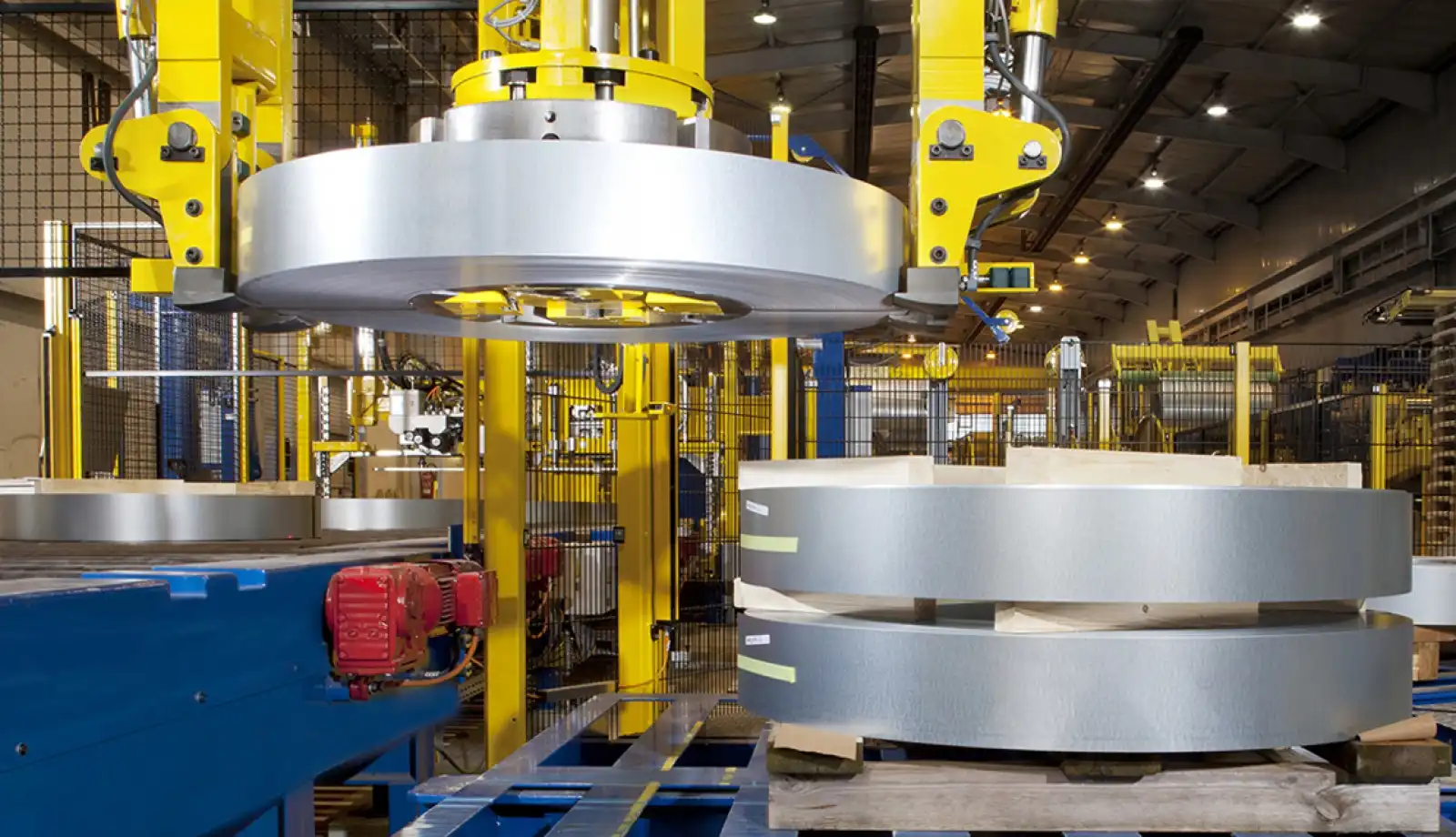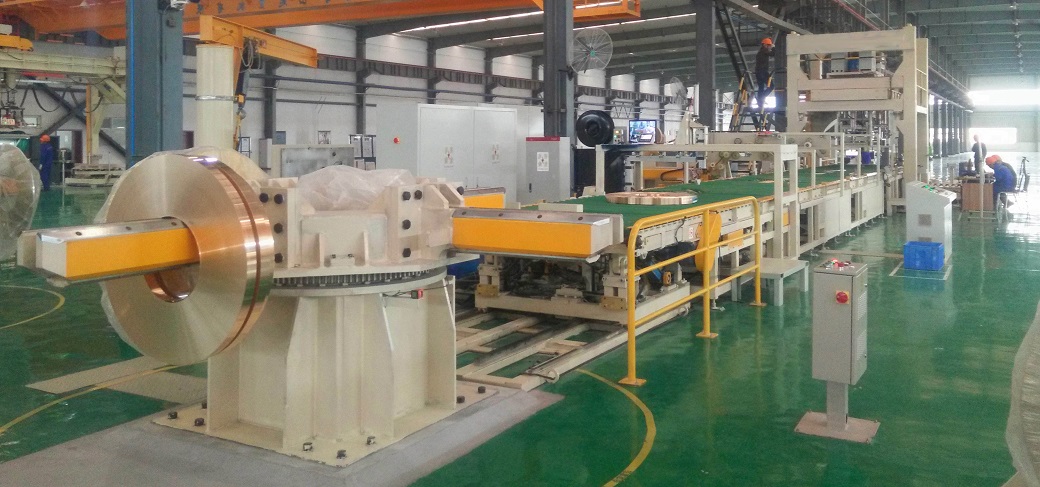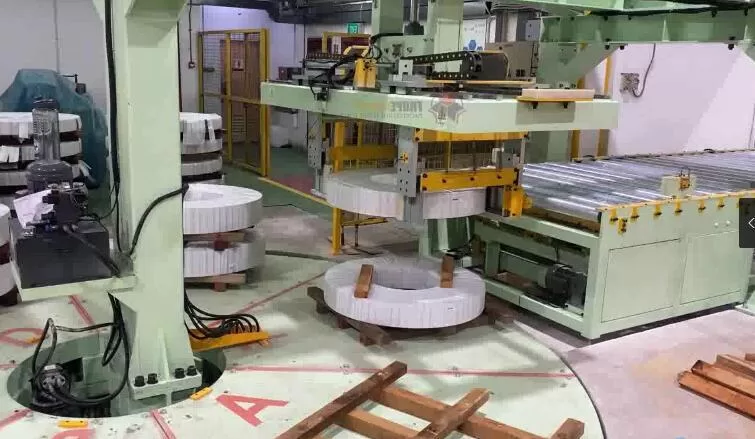In today's manufacturing world, especially in the U.S., rising labor costs and a shortage of skilled workers are major headaches. I see it all the time when I talk to plant managers. You have production targets to meet, but your packing line, often running with manual or semi-automatic processes, becomes a bottleneck. This situation is frustrating. It leads to inconsistent packaging, which can damage your valuable coils. It creates safety risks for your team. And it causes production delays that directly impact your bottom line and your reputation with customers. Many U.S. manufacturers, however, are finding a powerful solution to these problems: they are investing in fully automatic coil packing systems.
U.S. manufacturers are successfully cutting labor costs by implementing automatic coil packing systems. These advanced systems take over repetitive and physically demanding tasks like coil handling, strapping, wrapping, and labeling. This automation directly reduces the number of operators required per shift, minimizes human error, increases throughput, and allows for continuous 24/7 operation. The result is a significant decrease in payroll expenses, recruitment and training costs, and a substantial boost in overall operational efficiency and profitability.

You might be thinking that a machine is just a machine. But the move to automation is much more than a simple swap of human hands for mechanical arms. It’s a strategic shift that can fundamentally change your entire operation for the better. It’s about creating a more reliable, predictable, and profitable business. Let’s break down how this technology delivers real results and what you should consider when exploring this path for your own factory.
How Does Automation Directly Impact Labor Costs in Coil Packing?
You look at your profit and loss statement, and the line item for labor is always a big one. I know because I've been there. Every manual task in your packing area—lifting, pushing, strapping, wrapping—is a direct and recurring cost. This cost is not just about wages. It includes overtime when you're behind schedule, the high price of recruitment, and the constant need for training. When a key employee is out sick, on vacation, or quits, your entire packing line can slow down or even stop, creating a ripple effect of delays across your plant. And you always worry about the risk of injury, which can lead to expensive workers' compensation claims and lost productivity. An automatic coil packing system directly confronts these challenges. It provides a consistent, reliable, and predictable output that fundamentally changes your cost structure.
Automation directly slashes labor costs by replacing repetitive manual tasks with efficient, tireless machine processes. An automatic line can handle the entire packing sequence, from taking the coil off the turnstile to strapping, wrapping, stacking, and labeling it for shipment. This drastically reduces the number of operators needed per shift, eliminates the need for most overtime pay, lowers the risk of costly workplace injuries, and cuts the hidden expenses associated with high employee turnover and continuous training.

When I first started as an engineer, I spent a lot of time on the factory floor. I saw teams of four or five people working hard just to keep up with one slitting line. Their work was tough, repetitive, and often dangerous. The costs went far beyond their hourly wages. Now, when I design and install a new automatic line for a client, I see that same work being done by just one supervisor who oversees the entire process. This is the most visible impact of automation.
The Real Story of Labor Savings
The savings are not just about reducing headcount. It's about reallocating your valuable human resources. The people who once did the manual packing can be trained for higher-value roles. They can become machine operators, maintenance technicians, or quality control inspectors. This creates a more skilled and engaged workforce, which is a huge asset for any company. You are not just eliminating a cost; you are transforming a job into a career. This shift helps you retain talent and build a stronger, more capable team.
Looking Beyond the Obvious Costs
Let's break down the costs associated with manual packing versus an automatic system. It's important to look at the complete picture. Many factory owners I speak with, like Javier, are very analytical. They want to see the numbers. So, here’s a simple comparison.
| Cost Factor | Manual Packing Process | Automatic Packing System |
|---|---|---|
| Operators per Shift | 3-5 operators | 1 supervisor |
| Overtime Pay | Frequent, to catch up with production | Minimal, system paces with production |
| Recruitment & Training | Constant cycle due to high turnover | Minimal, stable workforce |
| Workplace Injury Risk | High (strains, cuts, repetitive motion) | Very Low (manual handling eliminated) |
| Consistency | Varies by operator and shift | 100% consistent, every time |
| Throughput | Limited by human speed and endurance | Maximize line output, 24/7 |
When you add up all these factors—wages, benefits, overtime, training, insurance, and the indirect cost of downtime—the financial case for automation becomes very clear. It’s a direct and powerful way to make your operation more lean and resilient.
What is the Real ROI of an Automatic Coil Packing Line?
As a business owner, every major purchase must be justified. A new automatic packing line is a significant capital investment, and you need to know it will pay off. I've had many conversations with owners who are stuck. They know their old equipment is failing and costing them money, but they worry about the payback period for a new system. They ask, "Will it really deliver the promised savings? What if it takes five years to see a return?" This is a valid concern. But when you understand the full scope of the Return on Investment (ROI), you often find that the payback is much faster and more significant than you initially thought. The ROI goes far beyond just cutting your labor bill.
The real ROI of an automatic coil packing line comes from a combination of factors: direct labor savings, significant reductions in material waste (like stretch film and strapping), increased production throughput, better product protection that lowers damage claims, and the elimination of maintenance costs for old, unreliable equipment. For most steel service centers and mills, the payback period for a well-designed automatic packing line is typically between 18 and 36 months.

To truly understand the ROI, you have to look at your packing station not as a cost center, but as a value center. Good packing protects your product, ensures customer satisfaction, and keeps your entire production line moving smoothly. A poor packing station does the opposite. It creates costs everywhere.
The Other Pillars of ROI
Let's break down where the returns come from. I always advise my clients to think about these four key areas when they are building their business case.
- Material Savings: An automatic wrapper applies stretch film with precision. It uses the exact amount needed for optimal tension and protection, no more, no less. Manual wrapping is almost always wasteful. I've seen operators use 20-30% more film than necessary, just to be safe. An automatic system can save you tens of thousands of dollars a year on consumables alone.
- Increased Throughput: Your production line can only run as fast as its slowest point. In many factories, that's the packing station. An automatic line is designed to match the speed of your production, whether it's a slitting line or a rolling mill. This means no more bottlenecks. You can increase your overall output without adding another production line, a huge financial win.
- Reduced Product Damage: How much do you lose each year from coils damaged during shipping? Inconsistent manual wrapping can leave edges exposed or fail to provide enough protection, leading to rust, dents, and scratches. Automatic systems deliver a uniform, high-quality wrap every single time. This drastically reduces damage claims, credit notes, and the loss of customer trust.
- Lower Maintenance: If your current packing equipment is over 15 years old, like Javier's, you are likely spending a lot of time and money on repairs and spare parts. It's an unreliable part of your process. A new system comes with a warranty and is built with modern, reliable components, reducing unplanned downtime and maintenance headaches.
A Quick ROI Example
| ROI Component | Annual Savings Example (Medium-Sized Plant) | Notes |
|---|---|---|
| Labor Savings | $150,000 | (e.g., 3 fewer operators across two shifts) |
| Material Savings | $25,000 | (20% reduction in stretch film usage) |
| Throughput Gain | $75,000 | (Value of 5% more coils processed per year) |
| Damage Reduction | $30,000 | (Fewer customer claims and rejected products) |
| Maintenance Savings | $15,000 | (Eliminating repairs on old equipment) |
| Total Annual Savings: | $295,000 |
If the total project cost is, for example, $500,000, the payback period is less than 21 months. This is the kind of analysis that gets a project approved.
Can Automated Systems Improve More Than Just Labor Efficiency?
Your immediate focus might be on cutting labor costs, but I know that your challenges as a plant owner are much broader. You are constantly thinking about equipment uptime, product quality, and how to respond to fluctuating market demands. An old, manual packing line is a weak link in your entire operation. It can't keep up when production is high, creating bottlenecks that starve the rest of your plant. Inconsistent wrapping can lead to damaged coils, which means unhappy customers and expensive claims that hurt your profitability. Modern automated systems are designed to solve these problems. They are not just about speed; they are about control, consistency, and data, addressing a whole range of operational goals.
Yes, automated systems deliver significant improvements far beyond labor efficiency. They directly enhance product quality with consistent, secure packaging. They increase overall production throughput by eliminating packing bottlenecks. They dramatically improve workplace safety by removing workers from dangerous, repetitive tasks. And, crucially, they provide a stream of valuable production data that can be integrated with your MES and ERP systems, paving the way for a truly smart, digitized factory.

A modern packing line is a hub of intelligence. It’s one of the best places to start your factory's digital transformation journey. When you connect your packing line to your other systems, you get a complete view of your production process, from raw material to finished, ready-to-ship product.
The Ripple Effect of Smart Automation
Think about the goals that a forward-thinking owner like Javier has: increasing equipment uptime to 95% and pushing forward with digital transformation. An automated packing line is a key enabler for both.
- For Uptime and Predictive Maintenance: Modern systems are equipped with IoT sensors that monitor the health of motors, bearings, and pneumatic systems. This data can be fed into a central platform to predict when a component needs maintenance, before it fails. This is the core of predictive maintenance. Instead of reacting to breakdowns, you can schedule maintenance during planned downtime, pushing your overall equipment effectiveness (OEE) higher.
- For Digital Transformation: An automated line knows exactly what coil it is processing, how long it took, how much material it used, and when it was finished. This data is gold. It can be sent directly to your Manufacturing Execution System (MES) to update inventory in real time, or to your Enterprise Resource Planning (ERP) system to generate shipping documents automatically. This eliminates manual data entry, reduces errors, and gives managers a live, accurate view of production status.
A Better Way to Operate
The difference between a manual process and an integrated, automated one is night and day. Let's compare them across a few key areas that matter to every plant manager.
| Operational Area | Manual / Semi-Auto Challenge | Full-Auto Solution |
|---|---|---|
| Product Quality | Inconsistent wrapping, risk of damage. | Perfect, repeatable wrap quality. |
| Workplace Safety | High risk of strains, cuts, fatigue. | Operators moved to a safe supervisory role. |
| Throughput | Bottleneck, limits plant capacity. | Paces production, predictable cycle times. |
| Data & Visibility | Manual tracking, delayed information. | Real-time data for MES/ERP, full visibility. |
| Scalability | Hard to increase output without more people. | Can run 24/7 to meet peak demand. |
Investing in automation is not just about solving today's problems. It's about building a stronger, more competitive factory for the future. It gives you the tools to be more agile, more efficient, and more profitable.
How Do You Choose the Right Automation Partner for Your Steel Mill?
You have done your research. You've analyzed the ROI and decided that automation is the right move for your factory. Now comes the most important step: choosing a partner to design and build your system. When you search online, you will find dozens of suppliers. They all have impressive websites and brochures, and they all promise the best solution. But how do you know who you can truly trust? This is a decision that will impact your business for the next 15-20 years. Choosing the wrong partner can lead to a system that doesn't fit your needs, endless installation problems, and a lack of support when you need it most. The key is to look beyond the machine itself and find a true strategic partner who understands your industry and is invested in your long-term success.
To choose the right automation partner, you must look beyond the initial price tag. The best partner will have proven, documented experience in your specific industry, such as steel or aluminum coils. They should offer comprehensive, single-source support that covers everything from the initial design consultation to manufacturing, installation, training, and long-term after-sales service. Seek a partner who acts as a consultant, taking the time to understand your unique challenges and helping you achieve your strategic goals, not just sell you a piece of equipment.

This is a topic I feel very strongly about, and it's the reason I founded SHJLPACK. My journey in this industry taught me some hard lessons that I want to share.
From Employee to Factory Owner: My Perspective
I didn't start my career as a business owner. I started as a young engineer on the factory floor of a packing machine company. I saw everything. I saw projects that were a huge success and made the customer's business better. And I saw projects that failed. The failures almost always happened for the same reason: the customer chose the cheapest machine from a supplier who didn't understand their business. The supplier delivered a generic machine, the installation was difficult, and when something broke, getting support was a nightmare. The "cheap" machine ended up costing the customer far more in downtime and frustration.
When I started my own factory, I promised myself I would do things differently. I built my success by becoming a partner to my clients, not just a vendor. I learned that helping my clients succeed was the best way for me to succeed. Now, I have achieved my own financial goals, and my mission with SHJLPACK is to give back. I want to share my knowledge to help people like you make the right decisions.
What to Ask a Potential Partner
When you are interviewing potential suppliers, don't let them just show you a catalog. You are not buying a product; you are entering a long-term relationship. Here are the questions you should ask to find a true partner:
| Question Category | Key Questions to Ask | Why It Matters |
|---|---|---|
| Industry Experience | "Can you show me case studies or videos of systems you've installed for companies that handle the same products as us (e.g., steel slitting coils)?" | A partner with experience in your industry understands the specific challenges, like handling oily surfaces, heavy weights, and sharp edges. |
| Customization Process | "What is your process for designing a custom solution? How will you ensure it fits our factory layout and production flow?" | A good partner will do a thorough analysis of your needs and design a solution for you, not sell you a standard machine. |
| Project Management | "Who will be my single point of contact during the project? How will you manage installation and commissioning?" | You need a dedicated project manager who will take full responsibility and ensure a smooth startup. |
| After-Sales Support | "What does your after-sales support include? What is your spare parts availability? Do you offer remote diagnostics?" | The relationship begins after the machine is installed. Strong support is critical for long-term reliability. |
| Future-Proofing | "How can your system help us with our future goals, like digital integration (MES) and meeting stricter environmental standards?" | A forward-thinking partner will help you build a system that grows with your business. |
A great partner doesn't just sell you steel and wires. They provide a total solution that solves your problems and helps you achieve your goals.
Conclusion
Automating your coil packing is more than a cost-cutting measure; it's a strategic investment in your factory's future efficiency, quality, and profitability. Choose your partner wisely.




